Schlafen 11 predicts response to platinum-based chemotherapy in gastric cancers
- PMID: 33785877
- PMCID: PMC8257722
- DOI: 10.1038/s41416-021-01364-3
Schlafen 11 predicts response to platinum-based chemotherapy in gastric cancers
Abstract
Background: Although unresectable or recurrent gastric cancers (GC) are frequently treated with platinum-based chemotherapy, response to treatment remains unpredictable. Because Schlafen 11 (SLFN11) is recently identified as a critical determinant of platinum sensitivity, we investigated the potential clinical utility of SLFN11 in the treatment of GC.
Methods: We analysed the correlation between SLFN11 expression and overall survival in 169 GC patients by our established immunohistochemical approach. The impact of SLFN11 expression on the response to platinum and transition of SLFN11 expression upon long-term treatment with platinum were examined using GC cell lines and organoids.
Results: GC patients with high-SLFN11 expression exhibited significantly better survival than those with low-SLFN11 expression, and the significance increased when we selected patients treated with platinum-based chemotherapy. Knockout of SLFN11 and reactivation of SLFN11 in GC cells conferred resistance and sensitivity to platinum, respectively. In GC cells and organoids, long-term treatment with oxaliplatin suppressed SLFN11 expression while imparting drug resistance. The acquired resistance to oxaliplatin was reversed by reactivation of SLFN11 with epigenetic modifying drugs.
Conclusions: This is the first report revealing definitive clinical implications of SLFN11 in the treatment of GC patients and providing novel strategies for the drug selection based on SLFN11 expression.
Conflict of interest statement
The authors declare no competing interests.
Figures
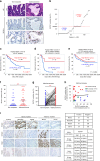
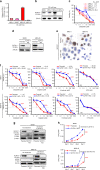
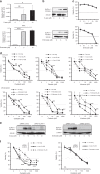
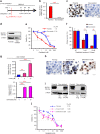
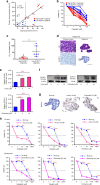
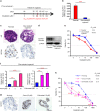
Similar articles
-
Prognostic impact of Schlafen 11 in bladder cancer patients treated with platinum-based chemotherapy.Cancer Sci. 2022 Feb;113(2):784-795. doi: 10.1111/cas.15207. Epub 2021 Dec 7. Cancer Sci. 2022. PMID: 34808009 Free PMC article.
-
SLFN11 Expression in Advanced Prostate Cancer and Response to Platinum-based Chemotherapy.Mol Cancer Ther. 2020 May;19(5):1157-1164. doi: 10.1158/1535-7163.MCT-19-0926. Epub 2020 Mar 3. Mol Cancer Ther. 2020. PMID: 32127465 Free PMC article.
-
Epigenetic inactivation of the putative DNA/RNA helicase SLFN11 in human cancer confers resistance to platinum drugs.Oncotarget. 2016 Jan 19;7(3):3084-97. doi: 10.18632/oncotarget.6413. Oncotarget. 2016. PMID: 26625211 Free PMC article.
-
Schlafen 11 (SLFN11), a restriction factor for replicative stress induced by DNA-targeting anti-cancer therapies.Pharmacol Ther. 2019 Sep;201:94-102. doi: 10.1016/j.pharmthera.2019.05.009. Epub 2019 May 23. Pharmacol Ther. 2019. PMID: 31128155 Free PMC article. Review.
-
A wake-up call for cancer DNA damage: the role of Schlafen 11 (SLFN11) across multiple cancers.Br J Cancer. 2021 Nov;125(10):1333-1340. doi: 10.1038/s41416-021-01476-w. Epub 2021 Jul 22. Br J Cancer. 2021. PMID: 34294893 Free PMC article. Review.
Cited by
-
Biology and Development of DNA-Targeted Drugs, Focusing on Synthetic Lethality, DNA Repair, and Epigenetic Modifications for Cancer: A Review.Int J Mol Sci. 2024 Jan 6;25(2):752. doi: 10.3390/ijms25020752. Int J Mol Sci. 2024. PMID: 38255825 Free PMC article. Review.
-
Precision Oncology with Drugs Targeting the Replication Stress, ATR, and Schlafen 11.Cancers (Basel). 2021 Sep 14;13(18):4601. doi: 10.3390/cancers13184601. Cancers (Basel). 2021. PMID: 34572827 Free PMC article. Review.
-
The crucial role of single-stranded DNA binding in enhancing sensitivity to DNA-damaging agents for Schlafen 11 and Schlafen 13.iScience. 2023 Nov 23;26(12):108529. doi: 10.1016/j.isci.2023.108529. eCollection 2023 Dec 15. iScience. 2023. PMID: 38125019 Free PMC article.
-
Circulating tumor cell heterogeneity in neuroendocrine prostate cancer by single cell copy number analysis.NPJ Precis Oncol. 2021 Aug 12;5(1):76. doi: 10.1038/s41698-021-00211-1. NPJ Precis Oncol. 2021. PMID: 34385567 Free PMC article.
-
SLFN11, far from being limited to responding to cancer DNA damage.Clin Exp Med. 2025 Aug 26;25(1):304. doi: 10.1007/s10238-025-01776-y. Clin Exp Med. 2025. PMID: 40856812 Free PMC article. Review.
References
Publication types
MeSH terms
Substances
Grants and funding
LinkOut - more resources
Full Text Sources
Other Literature Sources
Medical
Miscellaneous

